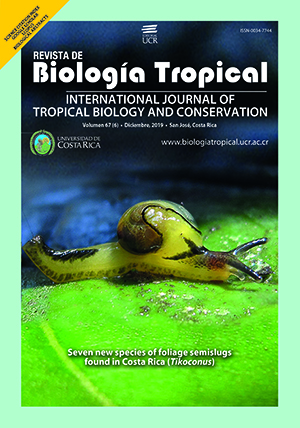Abstract
Introduction: The diversity of macro-arthropods is related to the state of disturbance of the soil, caused mainly by the change of land use for agricultural activities. A strategy for the conservation of these organisms is the implementation of diversified production systems such as silvopastoral systems, however; In the southeast of Mexico, information is still limited. Objective: The aim of the present study was to evaluate and compare the richness, abundance of macro-arthropods in four contrasting agro-ecosystems: two silvopastoral systems made of Leucaena leucocephalaand associated pastures (i.e. Panicum maximumcv mombaza and Cynodon plectostachyus), a pasture of Brachiaria brizanthawith scattered trees in low density and, a medium-stature forest. Methods: For this, the pit-fall traps were used, which consisted of plastic containers of one liter capacity and a diameter of 14.4 cm. The samplings were made in two periods: one in the month of February and another in the month of May 2018, in each month there were five spaced collections, which made a total of 100 samples. Results: A total of 1 737 organisms belonging to 14 species of 11 genera were collected. The systems with the greater abundance of macro-arthropods were the system of medium-stature forest (923 individuals) and the silvopastoral system of L. leucocephalawith C. plectostachyus(354 individuals). The most abundant genera were: Hymenoptera, Coleoptera, Aracnidos and Orthoptera. The greatest diversity of macro-arthropods occurred in the silvopastoral systems of L. leucocephalawith P. maximum(H '= 1.586) and L. leucocephalawith C. plectostachyus(H' = 1.441). Conclusions: The results show that livestock systems managed with woody components (trees or shrubs) can be equated, in terms of abundance and diversity of macro-arthropods, with systems such as tropical forests, which contributes to the integrity and functionality of the agro-ecosystems.

This work is licensed under a Creative Commons Attribution 4.0 International License.
Copyright (c) 2019 Pablo J. Ramírez-Barajas, Bella E. Santos-Chable, Fernando Casanova-Lugo, Luis A. Lara-Pérez, Jorge I. Tucuch-Haas, Armando Escobedo-Cabrera, Gilberto Villanueva-López3, Víctor F. Díaz-Echeverría


